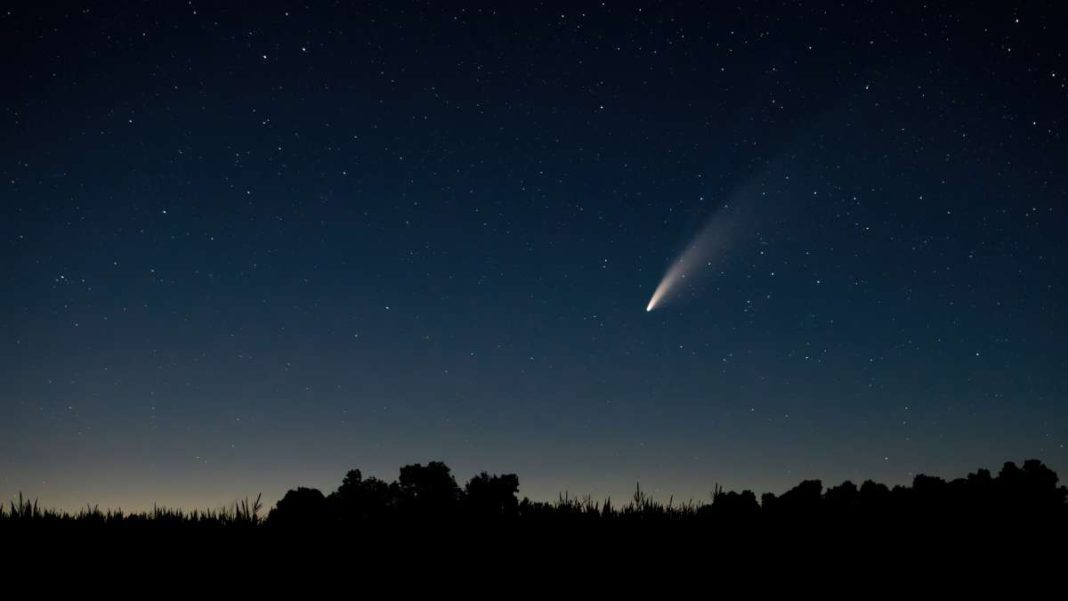UNITED STATES: A massive comet, known as “Comet 12/P Pons-Brooks” but more commonly referred to as the “devil comet,” is set to make a close pass by Earth for the first time in seven decades. The celestial object has garnered its unique nickname due to the astonishing formation of two “horns” made up of gas and ice.
While the name may sound ominous, there is no need for concern as this “devil comet” poses no threat to our planet. Instead, it promises to provide a spectacular celestial display as it graces our skies.
The devil’s horns
Comets, those celestial objects, are essentially large conglomerates of dust and ice that follow elliptical orbits around the Sun. They are remnants of the formation of our solar system billions of years ago, often characterized by their long, streaming tails. These tails are a result of the rapid burning of gases as comets approach the Sun.
However, “devil comet” has been particularly bright and captivating due to two significant eruptions on the comet. These outbursts transformed the comet from a dim speck that required professional telescopes to observe into a celestial spectacle that can be seen from one’s own backyard. Dr. Theodore Kareta, a postdoctoral researcher at the Lowell Observatory in Flagstaff, Arizona, explained, “There aren’t that many comets that have outbursts, these sudden increases in brightness, that are so strong, and even fewer that have them a couple of times during one orbit. It seems like Pons-Brooks… is just really active.”
These eruptions gave the fuzzy cloud around the comet’s nucleus an unusual shape, resembling two “devil horns,” hence the intriguing moniker.
Close encounter with Earth
“Devil comet” is set to reach perihelion, the point closest to the Sun, on April 21, 2024. A little over a month later, on June 2, 2024, it will make its closest approach to Earth. Depending on various conditions, this celestial visitor will be visible to the naked eye, offering skywatchers a unique opportunity to witness its grandeur.
“Devil comet” is not a stranger to our solar system; it’s classified as a periodic comet with an orbital period of approximately 71 years. Remarkably, it was first discovered in 1812 by the French astronomer Jean-Louis Pons, and it reappeared in 1883 when observed by the astronomer William Brooks.
While the name “devil comet” might evoke thoughts of catastrophic scenarios akin to the Hollywood film “Deep Impact,” there’s no reason for alarm. Scientists assure us that this comet, despite its ominous trajectory, will not create a real-life disaster. Instead, it will gracefully pass close to Earth and then continue its journey back into the depths of our solar system. The next time it graces us with its presence won’t be until the year 2095.
Also Read: NASA’s Lucy Spacecraft Achieves Milestone with Successful Flyby of Asteroid ‘Dinky’



